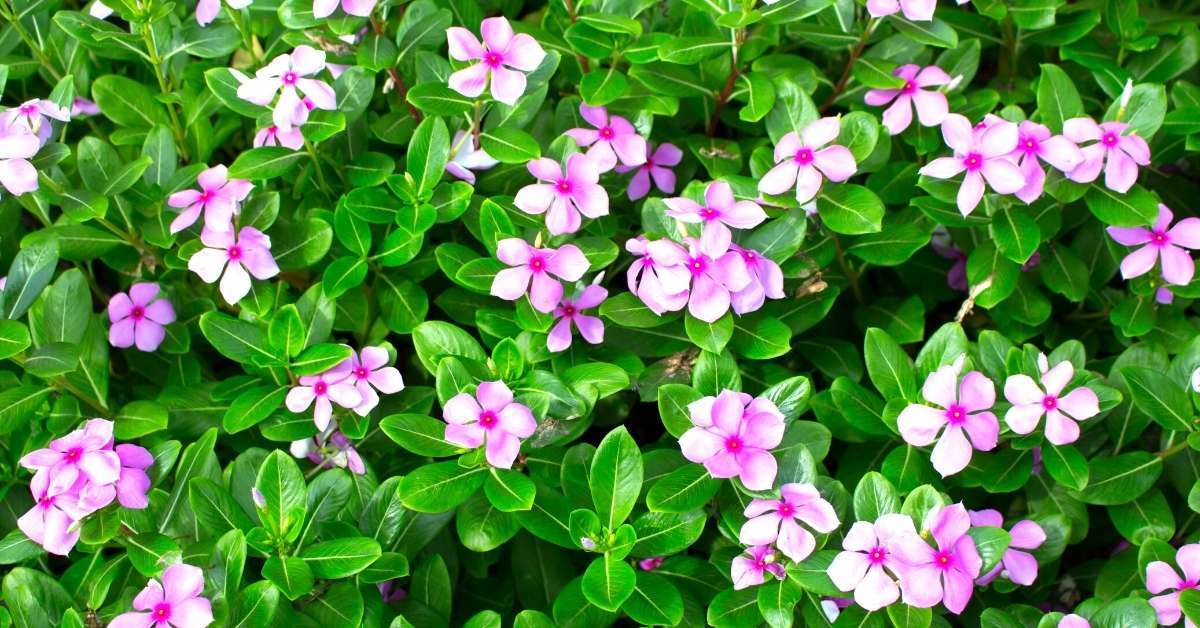
Catharanthus, commonly known as periwinkle or Vinca, is a fascinating and enigmatic plant that captivates people with its beauty and medicinal properties. This flowering plant belongs to the Apocynaceae family and is native to Madagascar. With its delicate and vibrant blooms, Catharanthus has become a popular choice for gardens and landscapes around the world.
But there is more to Catharanthus than meets the eye. Beyond its aesthetic appeal, this plant holds a range of captivating facts that make it an intriguing subject for plant enthusiasts. From the depths of its origins to its diverse uses in traditional medicine and modern science, Catharanthus continues to astound us with its secrets.
In this article, we delve into the enigmatic world of Catharanthus and uncover 10 fascinating facts that will enhance your understanding and appreciation of this remarkable plant.
Key Takeaways:
- Catharanthus, also known as Vinca or Periwinkle, is a captivating plant with vibrant flowers and medicinal properties, making it a popular choice for gardens and traditional medicine.
- With over 50 species, Catharanthus is low-maintenance, attracts pollinators, and has cultural significance. Its versatile uses range from natural dye to cosmetic ingredients, making it a beloved plant worldwide.
Catharanthus is commonly known as Vinca or Periwinkle.
Vinca, also referred to as Periwinkle, is a popular flowering plant that belongs to the Apocynaceae family. It is native to Madagascar but is now widely cultivated and found in various parts of the world. Its scientific name, Catharanthus, is derived from the Greek words “katharos” meaning pure and “anthos” meaning flower, referring to its lovely blooms.
Catharanthus is known for its beautiful and vibrant flowers.
The flowers of Catharanthus come in a wide range of colors, including white, pink, purple, and red. They have a distinct star-shaped appearance and often feature a contrasting color at the center, which adds to their visual appeal. These captivating blooms make Catharanthus a popular choice for gardens, landscaping, and floral arrangements.
There are over 50 different species of Catharanthus.
Catharanthus encompasses a diverse group of species, each with its own unique characteristics and flower variations. Some of the most common species include Catharanthus roseus, Catharanthus lanceus, and Catharanthus trichophyllus. These different species offer a wide array of choices for plant enthusiasts and gardeners.
Catharanthus is used in traditional medicine for its medicinal properties.
The leaves and roots of Catharanthus have been used in traditional medicine for centuries. They contain alkaloids, such as vincristine and vinblastine, which have shown promising anti-cancer properties. These compounds are utilized in modern medicine for the treatment of various types of cancers, including leukemia and lymphoma.
Catharanthus is a low-maintenance plant.
One of the advantages of growing Catharanthus is its low-maintenance nature. It is a hardy plant that can adapt to various soil conditions and requires minimal watering once established. Additionally, it is relatively pest-resistant, making it a suitable choice for both experienced and novice gardeners alike.
Catharanthus is associated with numerous cultural and symbolic meanings.
In different cultures, Catharanthus is often associated with different meanings and symbolisms. In some traditions, it represents purity, love, and eternal fidelity. In others, it is believed to bring luck, protection, and ward off evil spirits. Catharanthus holds a special place in the hearts and beliefs of many people around the world.
Catharanthus can attract butterflies and other pollinators to your garden.
The vibrant flowers of Catharanthus are rich in nectar and act as a magnet for butterflies, bees, and other pollinators. By planting Catharanthus in your garden, you can not only enjoy its beauty but also contribute to the conservation of these important insect species.
Catharanthus has been used as a natural dye.
The pigments present in Catharanthus flowers have been used as a natural dye in textile industries. The colors extracted from the petals can range from soft pastels to deep and vibrant shades, providing a sustainable and eco-friendly alternative to synthetic dyes.
Catharanthus is a versatile plant with various uses.
Aside from its ornamental value, Catharanthus has other practical uses as well. The plant’s extracts have been utilized in the cosmetic industry for their skin-soothing and moisturizing properties. Additionally, Catharanthus can be grown as a ground cover or in hanging baskets, adding a touch of beauty to any space.
Catharanthus is celebrated in gardening competitions and shows.
Gardeners and enthusiasts often showcase their prized Catharanthus plants in gardening competitions and shows. These events allow people to display their gardening skills and creativity, while also appreciating the beauty and uniqueness of Catharanthus. It’s a testament to the allure of this enigmatic plant.
Catharanthus, also known as Vinca or Periwinkle, captivates gardeners and nature enthusiasts with its enigmatic qualities. From vibrant flowers to medicinal properties, this versatile plant holds many surprises. Low-maintenance and attractive to pollinators, Catharanthus adds beauty and intrigue to any garden. Symbolic meanings and traditional uses further enhance its allure. For those curious about the mysteries of Madagascar Periwinkle, our article "19 Surprising Facts About Madagascar Periwinkle" offers even more fascinating insights into this remarkable plant. Explore the depths of Catharanthus and uncover the secrets that make it truly special.
Was this page helpful?
Our commitment to delivering trustworthy and engaging content is at the heart of what we do. Each fact on our site is contributed by real users like you, bringing a wealth of diverse insights and information. To ensure the highest standards of accuracy and reliability, our dedicated editors meticulously review each submission. This process guarantees that the facts we share are not only fascinating but also credible. Trust in our commitment to quality and authenticity as you explore and learn with us.
